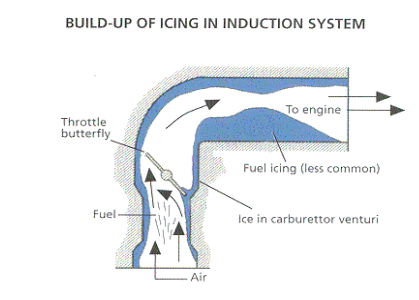Carburettor Icing
Posted by flysynergy on Mar 23, 2012 in Flight Safety | Comments Off on Carburettor Icing The following extract has been taken from GASIL, Issue 10 of 2011. Available from www.caa.co.uk/gasil.
The following extract has been taken from GASIL, Issue 10 of 2011. Available from www.caa.co.uk/gasil.
"According to a report by the BFU (German AAIB), a Robin DR315 was flying below cloud at low altitude when the engine started losing power. The power continued to reduce and the aircraft was destroyed when it collided with a wood during the ensuing forced landing on a road.
The report notes that the German Met Office reported that the temperature and dew point were close together, indicating high humidity, so conditions were favourable for carburettor icing. It seems the pilot had selected carburettor hot air after he noticed the loss of power, but the selection seemed to make the power loss worse, so he selected COLD again. According to the report, the pilot had once been told by a mechanic that selecting carburettor hot air in his aircraft was “completely useless”.
SafetySense leaflet 14, ‘Piston Engine Icing’, available like all such leaflets free for download from the CAA’s website www.caa.co.uk/safetysense gives advice on the subject. It notes that if carburettor icing is present, selection of hot air is likely to cause an apparent increase in rough running as the ice melts and passes through the engine. If this happens the temptation to return to cold air must be resisted so that the hot air has time to clear the ice. The leaflet also notes that air humidity is likely to be high close to cloud base. If we find ourselves cruising close to cloud base, we should not only check carburettor heating frequently, but should consider keeping carburettor hot air selected in the cruise until we need a high power setting."
